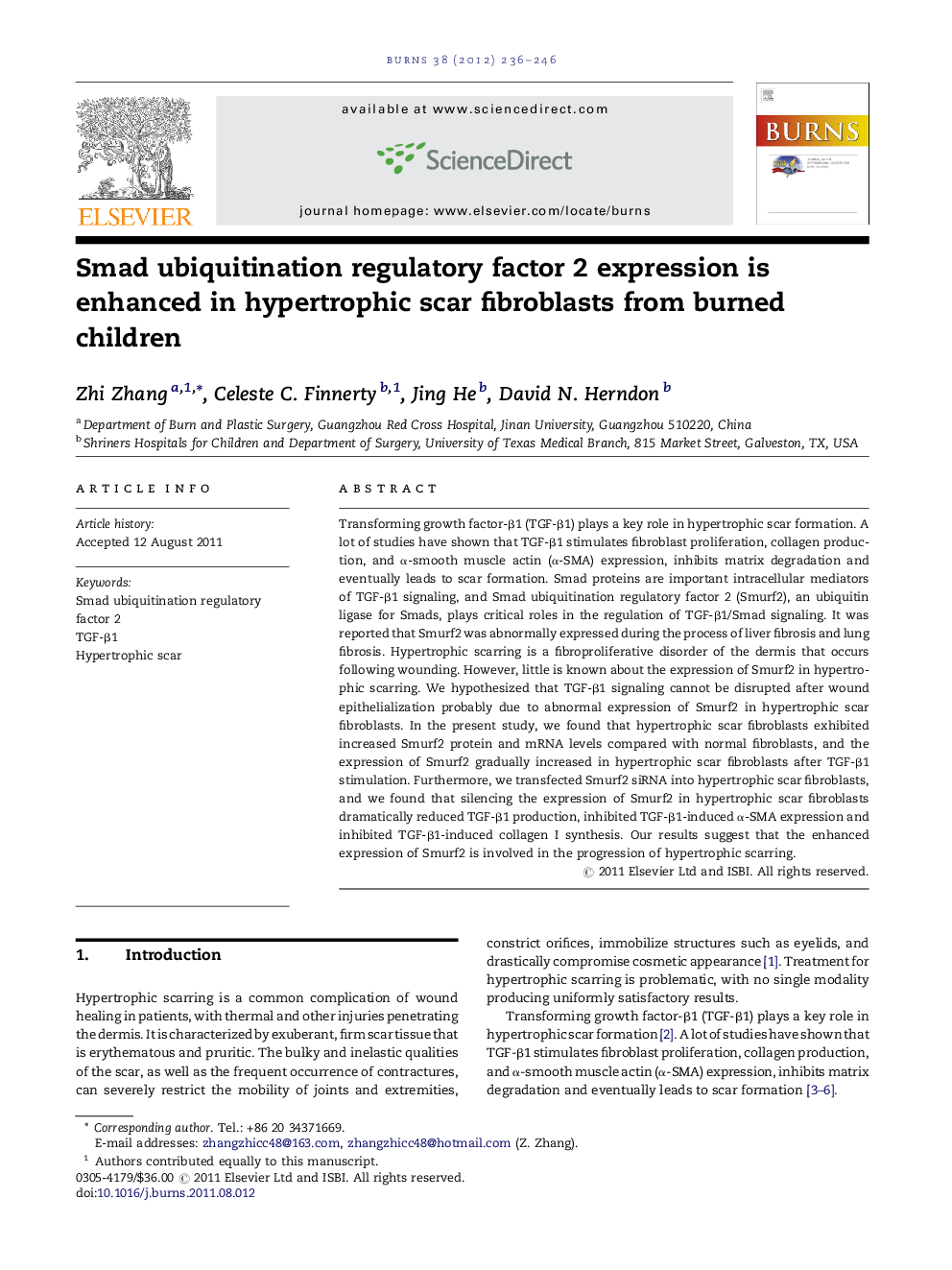| Article ID | Journal | Published Year | Pages | File Type |
|---|---|---|---|---|
| 3105257 | Burns | 2012 | 11 Pages |
Transforming growth factor-β1 (TGF-β1) plays a key role in hypertrophic scar formation. A lot of studies have shown that TGF-β1 stimulates fibroblast proliferation, collagen production, and α-smooth muscle actin (α-SMA) expression, inhibits matrix degradation and eventually leads to scar formation. Smad proteins are important intracellular mediators of TGF-β1 signaling, and Smad ubiquitination regulatory factor 2 (Smurf2), an ubiquitin ligase for Smads, plays critical roles in the regulation of TGF-β1/Smad signaling. It was reported that Smurf2 was abnormally expressed during the process of liver fibrosis and lung fibrosis. Hypertrophic scarring is a fibroproliferative disorder of the dermis that occurs following wounding. However, little is known about the expression of Smurf2 in hypertrophic scarring. We hypothesized that TGF-β1 signaling cannot be disrupted after wound epithelialization probably due to abnormal expression of Smurf2 in hypertrophic scar fibroblasts. In the present study, we found that hypertrophic scar fibroblasts exhibited increased Smurf2 protein and mRNA levels compared with normal fibroblasts, and the expression of Smurf2 gradually increased in hypertrophic scar fibroblasts after TGF-β1 stimulation. Furthermore, we transfected Smurf2 siRNA into hypertrophic scar fibroblasts, and we found that silencing the expression of Smurf2 in hypertrophic scar fibroblasts dramatically reduced TGF-β1 production, inhibited TGF-β1-induced α-SMA expression and inhibited TGF-β1-induced collagen I synthesis. Our results suggest that the enhanced expression of Smurf2 is involved in the progression of hypertrophic scarring.
